Unlike most of my writing, this is a very personal post. It was 1980—and I was in my mid-twenties—when I first saw Lake Chapala. I was only there a few hours, took a few photos, and was not overly impressed. It was to be several years before I revisited. What I hadn’t realized, until quite recently, was just how apropos the Kodachrome slides I took during that first brief visit would prove to be for most of my later life.
In 1980, I was on my way back to my teaching job in Mexico City from an Easter trip to the Copper Canyon, and was able to squeeze in two nights in a cheap hotel in Guadalajara before returning to the classroom. Given my limited time, and in the absence of a car, I decided the simplest way to see Mexico’s largest natural lake was to take a Panoramex day trip out to the lake.
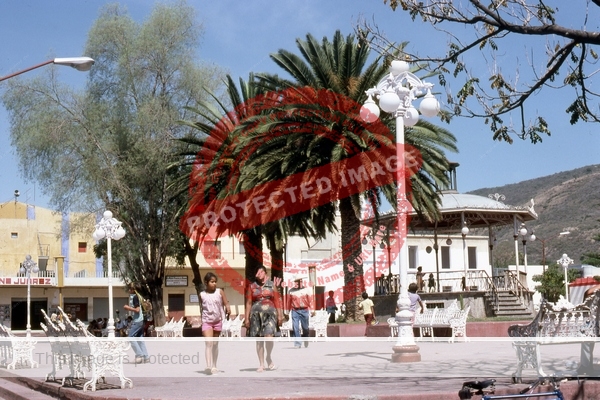
Jocotepec. © Tony Burton, 1980.
The Panoramex bus took highway 15 out of Guadalajara and made its first brief stop in the center of Jocotepec. Little did I realize at the time that this unprepossessing village would later become my home.
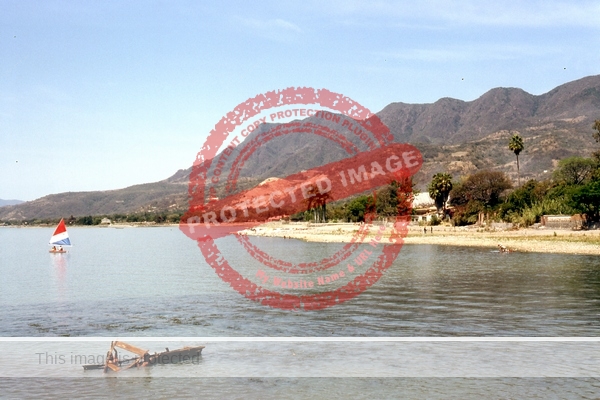
Ajijic and its eagle. © Tony Burton, 1980.
The next stop on this tour was Ajijic. Given only limited time to explore the village, I set off east along the lakeshore to get a better view of the picturesque setting, not realizing at the time that the view I captured included the Ajijic Eagle (Cerro del Aguila or Cerro Colorado).
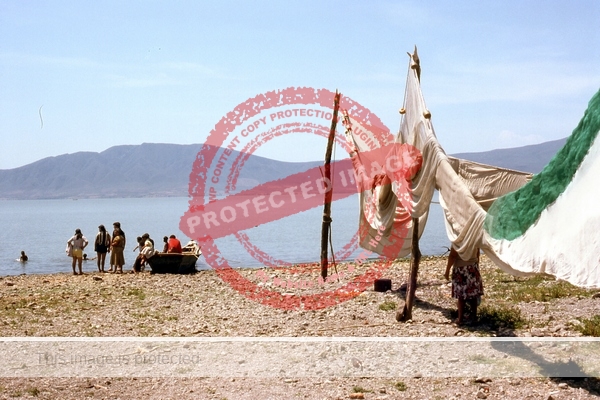
Ajijic beach. © Tony Burton, 1980.
On the way back to the bus, I just had time to take three quick costumbrista snaps of the lakeshore: fishing nets, washerwomen and a fishing boat, with no idea that these subjects had been depicted by numerous serious artists and photographers for decades.
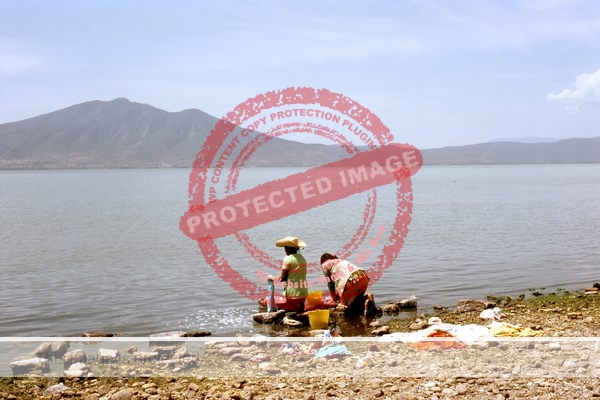
Washing clothes, Ajijic. © Tony Burton, 1980.
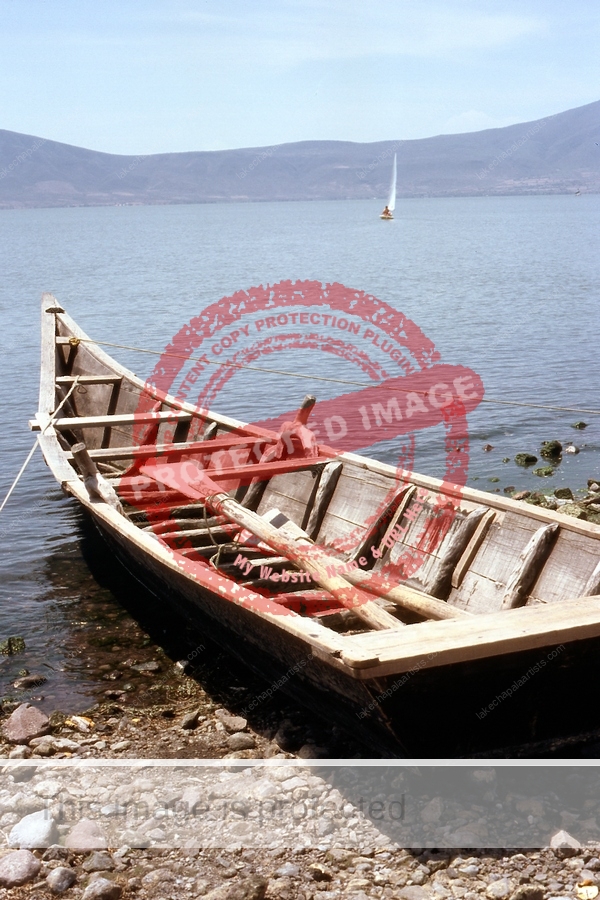
Ajijic fishing boat. © Tony Burton, 1980.
From Ajijic, the Panoramex bus stopped at the Chula Vista hotel for lunch, before the short drive to Chapala. Because it was only a few days after Easter, the town of Chapala was humming and buzzing, though we had such a short time there that I barely managed to snatch this quick photo from the pier.
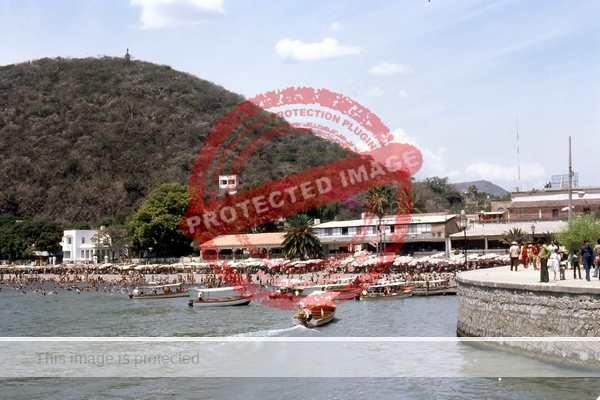
Chapala waterfront and Cerro San Miguel. © Tony Burton, 1980.
It was another six years (by which time I was living in Guadalajara) before I saw Lake Chapala again. Within a year, I’d met my future wife, the director of the School for the Deaf in Jocotepec, and we’d had three weddings: civil, religious and a special service organized by the staff of the school for the students. The rest, as they say, is history!
Several chapters of Foreign Footprints in Ajijic: Decades of Change in a Mexican Village offer more details about the history of the artistic community in Ajijic. The story of the School for the Deaf is told in my wife’s book New Worlds for the Deaf.
Comments, corrections and additional material are welcome, whether via the comments feature or email.
Tony Burton’s books include “Lake Chapala: A Postcard History” (2022), “Foreign Footprints in Ajijic” (2022), “If Walls Could Talk: Chapala’s historic buildings and their former occupants” (2020), (available in translation as “Si Las Paredes Hablaran”), “Mexican Kaleidoscope” (2016), and “Lake Chapala Through the Ages” (2008).
My mother, Mildred Boyd, moved to the Ajijic area (Canacinta) in 1982 and I was lucky enought to visit her her there that year. I’d never seen anything like it and, like her, was immediately enchanted. Love seeing your photos of that time. Thank you for sharing.
Judy, You’re most welcome; thanks for your kind words. Does your family also have photos from that time? If so, would you consider sharing some of them for possible publication on the blog? Warm regards, TB
Wonderful photos—just wonderful—thanks for posting them–
Thanks Bill – glad you like them! Cheers, Tony.